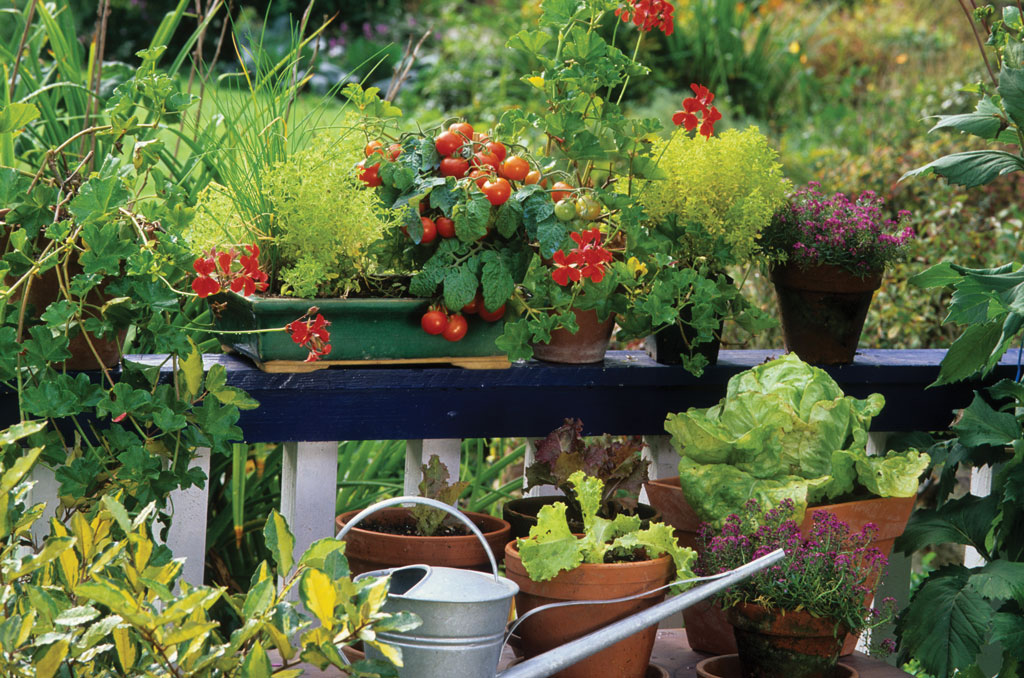
NULL
Willard Horn thought he had a green thumb until he moved to the Council Creek area northwest of Burnet. For seven years before the move, he cultivated a lush one-acre garden, but that had been in good soil. In Council Creek, his gardening skills were tested by a rocky landscape that gave way to sand. It didn’t have much in the way of organic materials or hold adequate water, two essentials for plants, especially vegetables.
Horn soon found a solution.
“I grow everything in containers,” he said. “You name it, I grow it in a container. Okra, squash, even pumpkins.”
He warned eager potters to develop a plan before rushing to the store for seeds.“I don’t know exactly who said it, but, ‘If you fail to prepare, you prepare to fail,’” he said.
Lesson one in container gardening is to stay away from using soil from your landscape, which could be contaminated. Instead, Horn recommends purchasing a high-quality potting soil.
“I would encourage you to get the best potting soil you can,” he said. “If you look at lower- or medium-quality potting soil, it’s usually sand and shredded wood, and the shredded wood hasn’t even been composted.”
Horn also uses shredded sphagnum moss and a good horticulture-grade perlite in his containers. He mixes the sphagnum and perlite judiciously with the soil.
“Sphagnum will hold about 20 times its weight in water,” he said. “Perlite provides for good drainage, and it has a unique ability to release stored water to the roots when they need it. I don’t do any potting without sphagnum and perlite.”
As for the pots themselves, Horn steers clear of terra cotta for everything but succulents and cacti. The porous nature of terra cotta, which is fired clay, tends to draw water away from the plant’s roots and out of the container. In the hot, dry Texas summers, you want to conserve water as much as possible, especially when container gardening.
Horn prefers plastic containers. One of his go-to choices is used molasses tubs he gets from ranchers and farmers.
Whatever kind of plastic pot is used, Horn said to always make sure it has adequate drain holes. If sitting it directly on the ground, drill drain holes about an inch up the side to discourage ants.
“If it’s on the bottom, ants will tunnel right up through the entire plant, but for some reason, if the holes are on the side, they don’t,” Horn said.
He then layers rocks, pea gravel, or sand (it can be useful!) on the bottom to prevent root rot.
Watering a container garden is one of the biggest challenges. While container plants tend to dry out more quickly than those in the ground or raised beds, they are also prone to root rot if the pots don't properly drain or if they get too much water.
Horn goes by the leaves. Plants with large leaves need more water than those with smaller leaves. He also applies 1-2 inches of mulch on top of the container to help retain moisture.
Another container positive: You can move your pots with the sun or to protect them from the elements.
The best part, however, is that no matter how big your space or unproductive your landscape, you can still have homegrown tomatoes.
“So if you don’t think you have the space or soil for traditional gardening, try containers and pots,” Horn said. “It’s worked great for me.”
daniel@thepicayune.com











